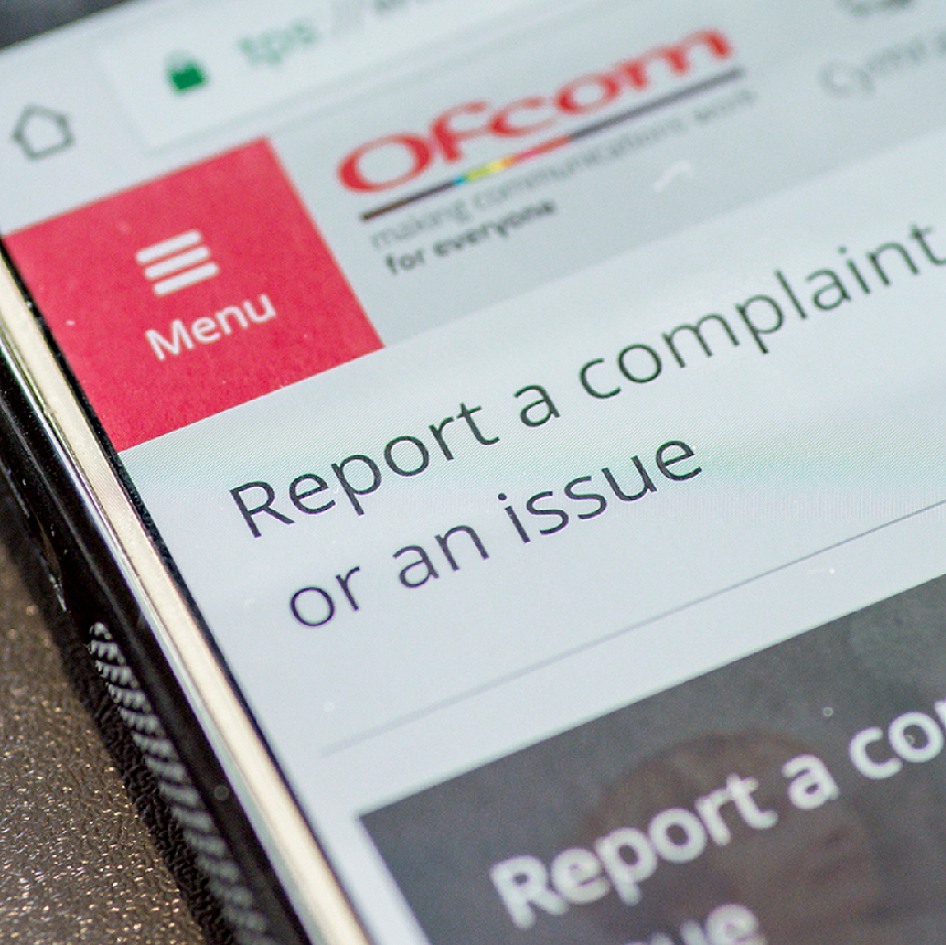Ofcom CEO – The £6bn Cost of Truly Universal UK Mobile Coverage
The CEO of Ofcom, Sharon White, yesterday told the Connected Britain event in London that to provide good mobile network (4G etc.) coverage across virtually all of the UK landmass would cost up to around £6 billion and is likely to require some form of cross subsidy.
As previously reported, next year will see the national telecoms regulator auctioning off the 700MHz band (formerly used for Digital Terrestrial TV services) for use by future Mobile technologies (e.g. 5G). The lower frequency of this band makes it ideal for delivering wide geographic coverage, not unlike the 800MHz band before it.
This is important because at the point where Ofcom sell 700MHz in 2019, they estimate that 200,000 rural UK homes and offices will still lack a good signal for mobile data and calls – from any operator. Admittedly EE aim to cover 95% of the UK’s landmass with their 4G network by the end of December 2020 (currently 90%), but they’re only one operator (we don’t all want to be EE customers) and that would still leave 5% to do.
The 700MHz auction has already proposed to improve this by suggesting the addition of a new coverage obligation (details), which would require both better indoor reception and on top of that at least two operators must commit to reach 92% of the UK land area with good reception. But yesterday the focus was on how Ofcom will then get to 100% in the future (no time-scale was given).
Sharon White, Ofcom’s CEO, said:
“This week we have provided technical advice to the government on how they might extend mobile coverage even further.
As we get beyond 92% of the UK’s geography and potentially towards 100%, increasing coverage means building masts in remote areas with no mobile signal at all.
Our view is that some form of cross subsidy would be necessary to do this. To keep costs down, there would be a strong case for contracting a single operator to build and operate masts where there are currently none, which all customers could then use.
How much would it cost? According to our estimates, to provide good mobile coverage across virtually all of the UK landmass would cost up to about £6 billion. That is an approximate number. It would need to be refined as operators gain practical experience in outlying areas. But it helps to illustrate the cost.
Improving mobile reception is a national priority, and we will continue to work closely with DCMS to explore every available solution.”
The figure of £6bn seems a bit on the high side for such a deployment but no doubt Ofcom have a far better understanding of the costs involved than we do. The idea of a cross subsidy approach is also an interesting one, although it’s worth remembering that none of this would overcome the usual obstructions from planning permission, getting a good power supply / data capacity to the mast, wayleaves and local opposition etc.
Suffice to say that reaching 100% won’t just be expensive, it’ll also face many obstacles and that could seriously hinder the pace of deployment. But for now it’s still just something that’s being debated and there’s no solid plan behind it.
Mark is a professional technology writer, IT consultant and computer engineer from Dorset (England), he also founded ISPreview in 1999 and enjoys analysing the latest telecoms and broadband developments. Find me on X (Twitter), Mastodon, Facebook and Linkedin.
« Vodafone – 7 UK Cities to Test Gigabit 5G Mobile Broadband in 2018 UPDATE
Latest UK ISP News
- FTTP (5513)
- BT (3514)
- Politics (2535)
- Openreach (2297)
- Business (2261)
- Building Digital UK (2243)
- FTTC (2043)
- Mobile Broadband (1972)
- Statistics (1788)
- 4G (1663)
- Virgin Media (1619)
- Ofcom Regulation (1460)
- Fibre Optic (1394)
- Wireless Internet (1389)
- FTTH (1381)
























































Why does Ofcom still treat mobile 4G/5G, WIFI Broadband and Fixed broadband as separate topics for remote communities?
We can make mobile calls via WIFI Calling and there has to be an optimum technology and associated cost for a given location. My view is there is more could be done to get Giga Fibre to remote communities and dual purpose masts shared by providers for last leg connectivity. Is it too much to ask to co-ordinate funding and expediency.
“Why does Ofcom still treat mobile 4G/5G, WIFI Broadband and Fixed broadband as separate topics for remote communities?”
Maybe due to differing cost/technology/performance of each service?
@Kenny’s Auto’s
Yes, however this is Ofcom inferring that there needs to be cross subsidy to get full 4G coverage. It is also proposing cross subsidy for broadband USO. We also have further phases of BDUK, voucher systems etc for FTTP. Whether it is direct government subsidy or a hidden subsidy in our mobile charges I am just raising the point that a remote community only needs one hybrid solution (best/cheapest). Whether that is 4G with broadband or WIFI with WIFI Calling (both using external antenna) will depend on the need. I am just highlighting that if we focus the subsidies then more could be achieved. We seem to get wrapped up in the specific technology rather than the basic connectivity need.
Intrigued, what’s a dual purpose mast (or tower)?
Given the last few % is where the cost is we can probably get to 99.9% with much less cost as the area needed for population coverage is much lower than geographic coverage
The rule of thumb in network build out is that every 10% of coverage you add costs as much as what you’ve already built. 100% costs twice as much as doing 90%.
It’s why mains gas and sewer networks stopped at around 80% coverage; go much further and you have to double people’s bills to fund it.
“Our view is that some form of cross subsidy would be necessary to do this. To keep costs down, there would be a strong case for contracting a single operator to build and operate masts where there are currently none, which all customers could then use.”
So Sharon seems to get the idea that infrastructure is expensive, and at the fringes of coverage, re-thinking the old “competition is everything” mantra becomes necessary. Subsidisation becomes a necessity (whether cross- or government-) she’s willing to consider. Creating a monopoly isn’t outside their thinking.
You could say the same thing about full-fibre on the fixed-network side too – it does, after all, have the same “national priority”. The “fringe” might be a rather bigger proportion, but the principle is little different.
Well, you *could* say it, if your organisation’s other focus isn’t on destroying BT.
I think BT Group have played a full part turning the entire central and local government against BT. The separation of Openreach was entirely avoidable. The fines were avoidable These were self-inflicted wounds by BT seniors no longer in the company. At least none of them are running hospitals.
The EE nod through, the WLA fair bet analysis suggests you would have difficulty proving your assertion.
The £6bn looks a bit crazy but like the early B-USO numbers they can be revised.
BT EE emergency services network built on a shared 4G infrastructure must do most of this! £6bn is a bit OTT, first pass FTTC is less than £2.5bn not the £5bn forecast in 2008/9. FTTP was deemed affordable, now it is much less so. Original B-USO costs also dismissed or much revised.
Sorry – FTTP deemed unaffordable…
Agree with the first post. If people live in a remote location then with that comes some negatives, one of those happens to be mobile phone coverage, and it could become the situation where a new mast is required for coverage in a remote area that ends up only serving a few subscribers. The remote location also gives rise to further problems, and that is maintenance and any emergency repairs, which often means people get used to the mobile network and so rely on it, and are left high and dry when the mast breaks down and it takes weeks to get fixed.
Any subsidy is better going into FTTP/FTTH and 100% deployment there. This gives fast broadband (with cheaper data tariffs) to these remote areas, and then allows for communities to apply for cheaper picocells from the mobile phone operators if they wish (which the operators then have access to good data connections and fibre to install them, Vodafone are already doing this), or people simply use Wi-Fi calling in and around their homes.
I’m in a town of 25,000 people, live just on the edge with only patchy outdoor coverage from all operators, so use Wi-Fi calling in around my home. If I had the choice of full 4G coverage or FTTP, I’d go for FTTP.